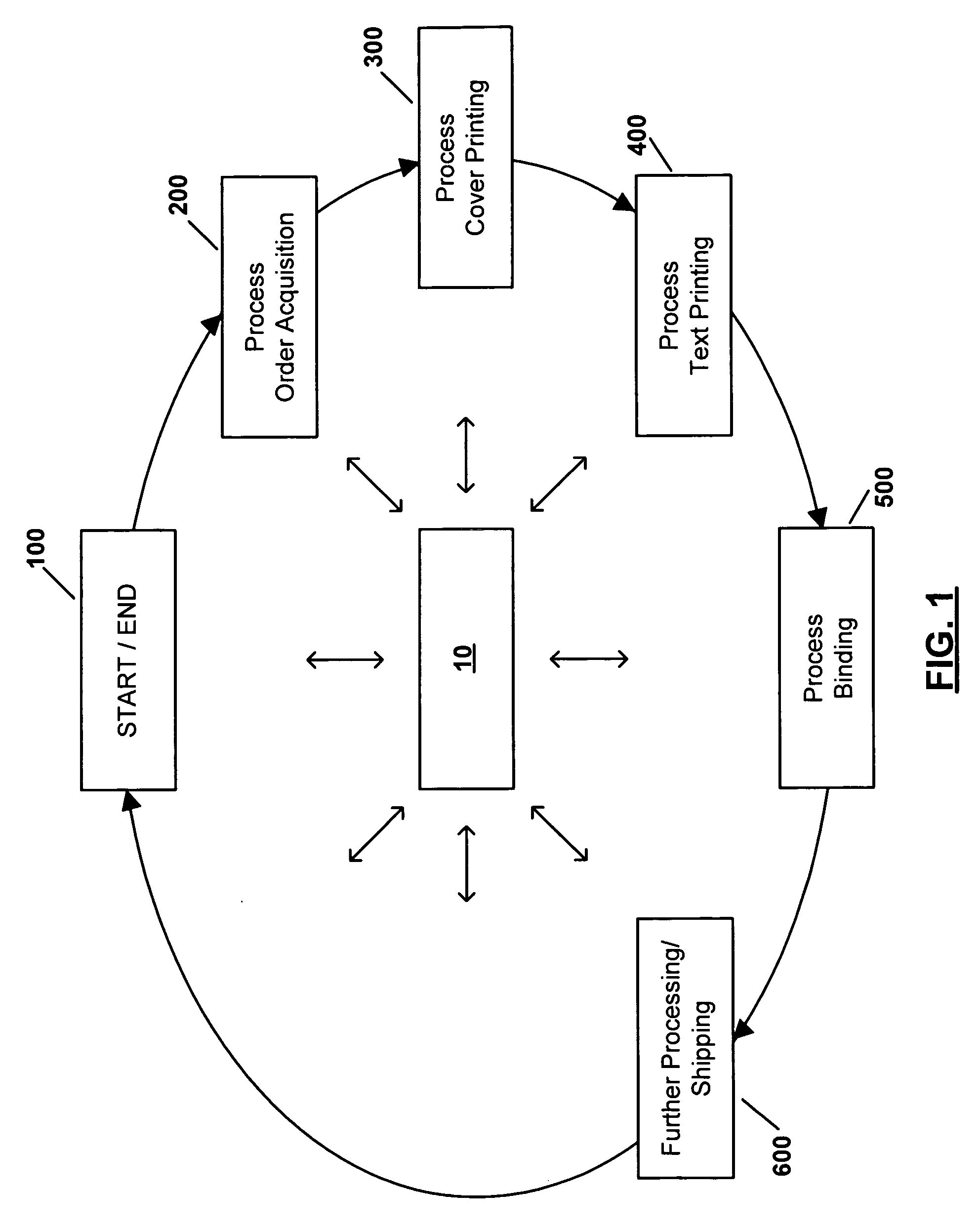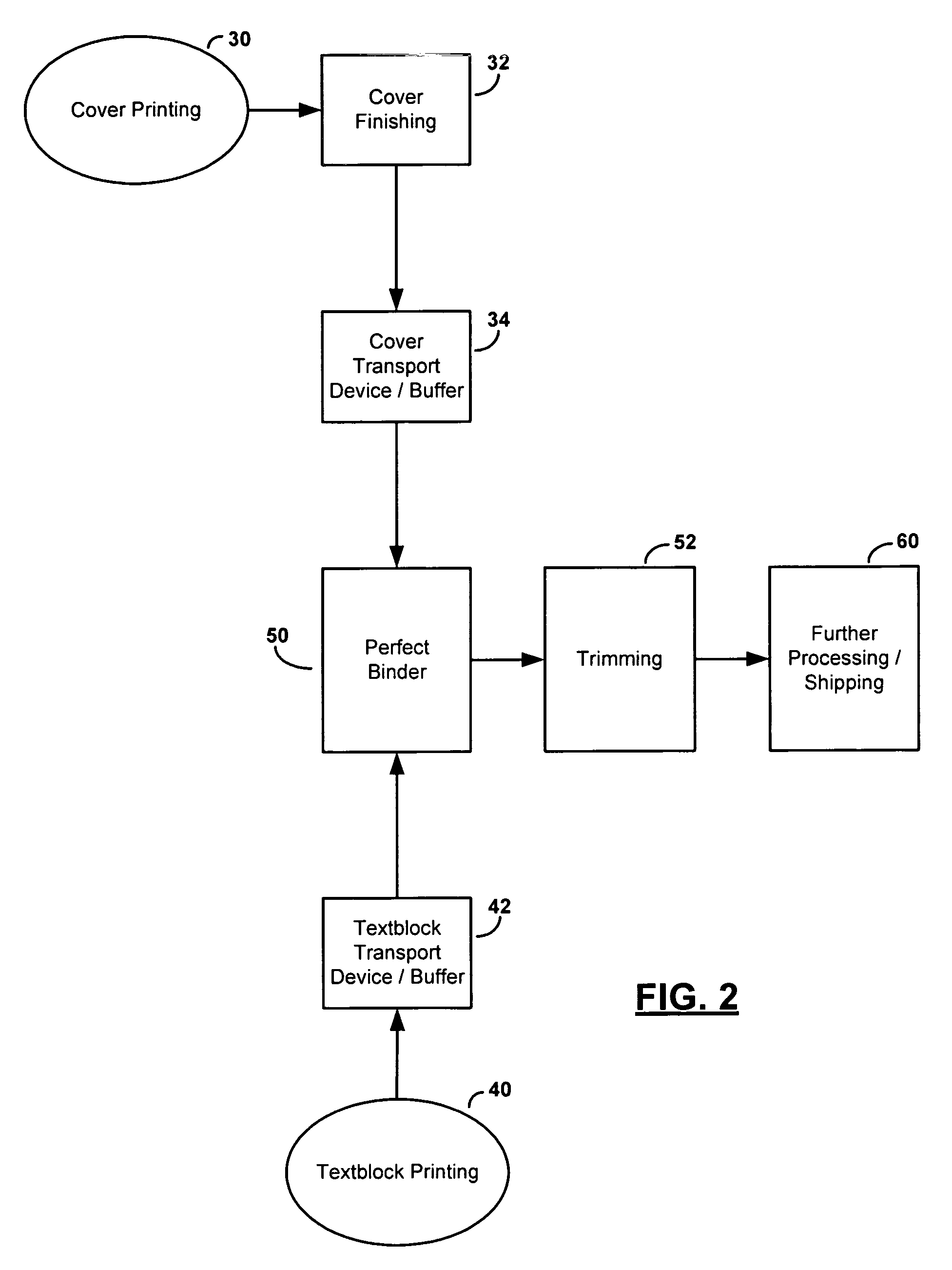System for and a method of producing a book on demand
a production method and system technology, applied in the field of book printing, can solve the problems of large number of books, up to 40%, waste, etc., and achieve the effects of high production rate, reduced downtime of system production units as well as rejects, and high quality of books
- Summary
- Abstract
- Description
- Claims
- Application Information
AI Technical Summary
Benefits of technology
Problems solved by technology
Method used
Image
Examples
Embodiment Construction
[0027] The following description is provided to enable any person skilled in the art to make and use the invention and sets forth the best modes contemplated by the inventor for carrying out the invention. Various modifications, however, will remain readily apparent to those skilled in the art. Any and all such modifications, equivalents and alternatives are intended to fall within the spirit and scope of the present invention.
[0028] In general, according to a first embodiment of the present invention, a system for manufacturing a book on demand comprises a first printing unit for printing a first component of the book (i.e. a cover), a second printing unit for printing a second component of the book (i.e. a text block), and a computer control system which initiates printing of the second component only after receipt of a triggering signal, which is preferably a signal that the manufacture of the first component is successful. The system may further comprise a binding station for b...
PUM
 Login to View More
Login to View More Abstract
Description
Claims
Application Information
 Login to View More
Login to View More - R&D
- Intellectual Property
- Life Sciences
- Materials
- Tech Scout
- Unparalleled Data Quality
- Higher Quality Content
- 60% Fewer Hallucinations
Browse by: Latest US Patents, China's latest patents, Technical Efficacy Thesaurus, Application Domain, Technology Topic, Popular Technical Reports.
© 2025 PatSnap. All rights reserved.Legal|Privacy policy|Modern Slavery Act Transparency Statement|Sitemap|About US| Contact US: help@patsnap.com



